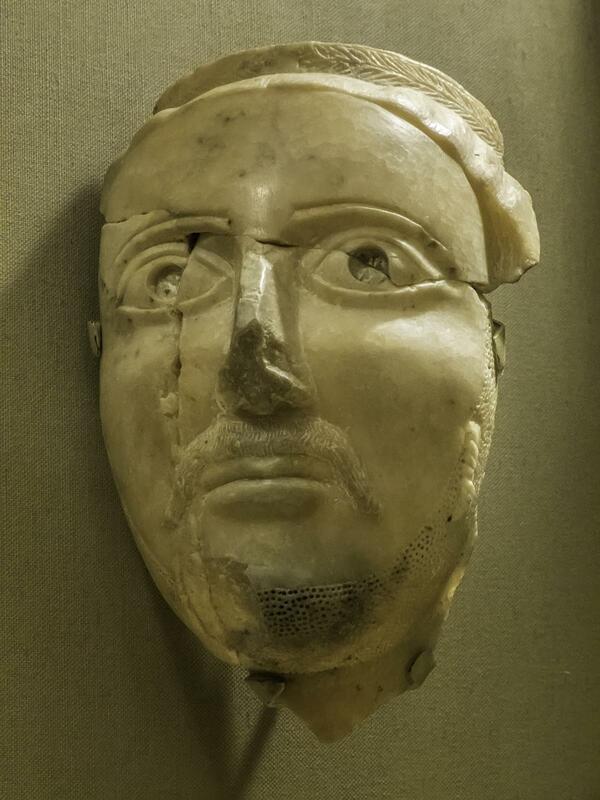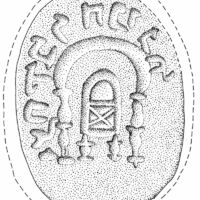Himyarite Jewish head
Type:
Sculptures
Date:
Fourth to fifth century
Location or Findspot (Modern-Day Country):
Yemen
Medium:
Stone
Dimensions:
H 24 cm
Description:
In the late Roman period, the southern part of the Arabian peninsula was home to several independent kingdoms that controlled trade in incense gums (myrrh and frankincense) between Arabia and the Mediterranean. These small kingdoms shared similar alphabets and left over 15,000 inscriptions. They had similar divinities, with one notable exception. Between the late third and the late fourth centuries, the Himyarite kingdom—essentially today's Yemen—defeated its neighbors, and its rulers converted to Judaism or were Jewish sympathizers. From the fifth century onward only monotheistic inscriptions survive, including several that refer to synagogues. Christian inscriptions appeared in the late fifth century. Judaism was promoted and Christians persecuted especially under Yusuf (Joseph) As'ar Yath'ar, who consolidated Himyarite power around 520 before he was killed by Aksumite (Ethiopian) Christians with Byzantine support. Nevertheless, southern Arabia soon became a Sasanian province, and eventually most of its inhabitants converted to Islam.
The Himyarite capital was at Zafar. A carnelian ring (undated) excavated there is incised with an arched Torah shrine and a Jewish name, Yishaq bar Hanina (Isaac son of Hanina), written backwards in Aramaic as appropriate for a seal. An alabaster head made in the fourth or fifth century cannot be precisely localized to Zafar but is almost certainly Himyarite. The laurel wreath likely indicates that he is a ruler, and the distinctive curled sidelock on his left cheek probably identifies him as Jewish. Earlier figural carvings from the region lack such locks (Hebrew peot), which were enjoined on Jewish men in the book of Leviticus 19:27. Curiously, the man appears to have only one sidelock, not two.
The Himyarite capital was at Zafar. A carnelian ring (undated) excavated there is incised with an arched Torah shrine and a Jewish name, Yishaq bar Hanina (Isaac son of Hanina), written backwards in Aramaic as appropriate for a seal. An alabaster head made in the fourth or fifth century cannot be precisely localized to Zafar but is almost certainly Himyarite. The laurel wreath likely indicates that he is a ruler, and the distinctive curled sidelock on his left cheek probably identifies him as Jewish. Earlier figural carvings from the region lack such locks (Hebrew peot), which were enjoined on Jewish men in the book of Leviticus 19:27. Curiously, the man appears to have only one sidelock, not two.
Relevant Textbook Chapter(s):
2
Repository and Online Resources:
• The alabaster head is at the Metropolitan Museum of Art, inv. no.1982.317.1.
• The ring and other finds from Zafar are idescribed by Paul Yule, an archaeologist from Heidelberg University.
Image Credits:
Metropolitan Museum of Art; Wikimedia Commons



